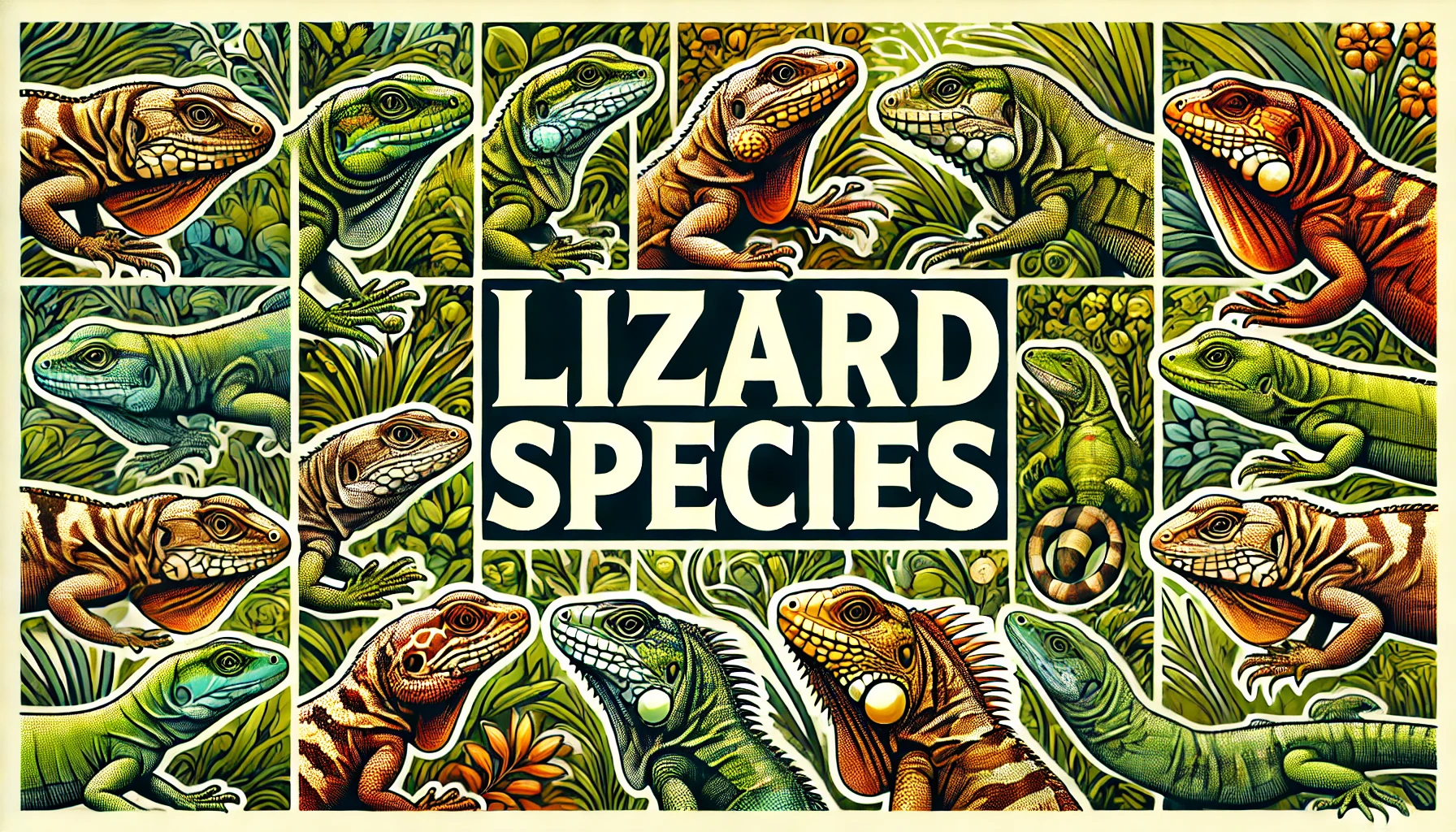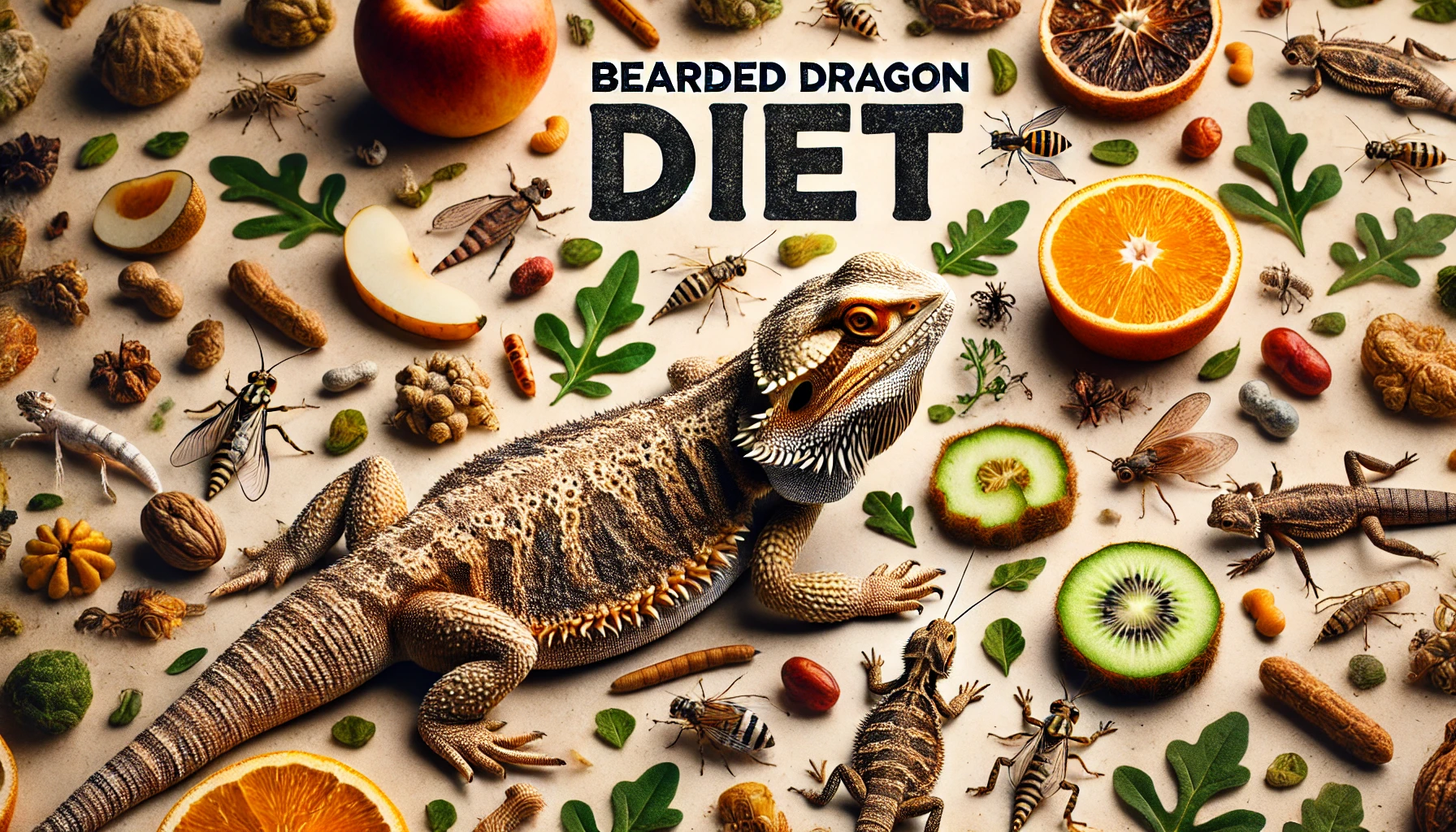Lizards, a fascinating group of reptiles, have diverse diets depending on their species, habitat, and needs. From tiny garden lizards to large iguanas, their eating habits vary widely. Whether you’re exploring their diet in the wild or caring for a pet lizard, understanding their nutritional requirements is essential. This guide will cover everything you need to know about what lizards eat.
What Do Lizards Eat And Lizard Feeding Types

Insect and Invertebrate Eaters
Many lizards are insectivores, meaning they primarily eat insects. Species like crested geckos and anoles thrive on live prey such as live crickets, mealworms, and fruit flies. These insects provide a high amount of protein, essential for maintaining energy and health. Insects like moths and small arachnids are also common in their diet. Owners should ensure these insects are healthy and clean, avoiding wild-caught bugs that might carry diseases.
Meat-Only Eaters
Carnivorous lizards would eat small animals, including rodents, birds, and even other lizards. These species rely on a strictly protein-based diet. While such feeding habits are common in the wild, in captivity, offering appropriately sized prey is crucial. For example, monitor lizards are reptilian predators that often feed on small mammals.
Plant-Only Eaters
Some lizards are herbivores that exclusively eat plant material. Green iguanas are a prime example. Their diet includes leafy greens like collard greens, turnip greens, and other vegetables. Herbivorous lizards also enjoy the occasional piece of fruit, such as mango or papaya, to supplement their diet with vitamins.
Omnivorous Lizards
Omnivores enjoy a mix of plant and animal-based food. For instance, bearded dragons and blue-tongued skinks eat both insects and vegetation. To ensure a balanced diet, provide these lizards with a variety of live prey and fresh greens. Including available feeder insects like silkworm, hornworms, and cockroach ensures a nutrient-rich diet.
Lizard Species and What Do Lizards Eat?
Bearded Dragon Diet

Bearded dragons are versatile omnivores that require a combination of insects, greens, and fruits. They thrive on a mix of mealworms, live crickets, and leafy vegetables like collard greens. Dusting their food with calcium powder ensures they receive proper calcium supplementation.
Leopard Gecko Diet
Leopard geckos are insectivores that enjoy a diet of meal worms, waxworms, and dubia roaches. Feed them several times a week to keep them healthy. Make sure their prey is dusted with vitamins for added nutritional benefits.
Chameleon Diet
Chameleons, with their unique tongue-catching technique, consume a variety of insects like grasshoppers, ants, and small arachnids. Some species may also eat lizards or other small prey in the wild, making them partial carnivores. A variety of live prey is key to maintaining their health.
Fruits and Vegetables
Small Invertebrates and Fresh Foods�
Lizards that eat insects and small invertebrates are part of a fascinating group of animals that differ significantly in their feeding habits. While some species like garden lizards primarily hunt insects in the wild, others might rely on what’s fed to lizards in captivity. A diet rich in live insects such as earthworms and fruit flies ensures they get an adequate amount of protein. However, feeding should also include a mix of fresh fruits and many vegetables to support omnivorous or herbivorous species. Resources like study.com can help owners learn more about these dietary needs and how to maintain a lizard’s health. Also, adding a properly fitting collar to your pet lizard can make it easier to handle them during feeding or veterinary visits.
Can Lizards Eat Fruits?
Yes, many lizards enjoy fruits as part of their diet. Species like iguanas and crested geckos benefit from fruits that are chopped into small, manageable pieces. However, fruits should complement their diet rather than form the main part of it.
The Role of Vegetables
Vegetables like turnip greens and dandelion greens are excellent sources of nutrients. They’re especially vital for herbivorous and omnivorous lizards. These greens should be fresh, washed, and free of pesticides. Owners should also be sure to feed a variety of vegetables to prevent boredom and meet their lizard’s dietary needs.
Pet Lizard Care
Feeding your pet lizard a balanced diet is crucial for its health and longevity. Lizards, like other reptiles, have unique dietary requirements depending on their species. Some lizards are herbivores and prefer to eat plants like leafy greens and fresh fruits, while others are carnivores or insectivores that thrive on live insects and small invertebrates such as snails and earthworms. It’s important to know how much to feed and what to include in their diet to ensure proper nutrition. For instance, you can offer crickets to your lizard several times a week, along with a variety of many vegetables to provide essential vitamins and minerals. Additionally, make sure to incorporate fresh fruits sparingly, as these can be a treat but should not replace staple food items.
Feed Your Pet Lizard
Feeding your pet lizard involves replicating their natural diet as closely as possible. Herbivores should have a steady supply of fresh greens, while insectivores need live prey. Always avoid feeding them processed or wild-caught food that may harm them. For precise dietary advice, consult a veterinary specialist.
Veterinary Assistance
A veterinarian can guide you on your lizard’s specific dietary requirements. They’ll help you adjust their diet based on age, health, and activity levels, ensuring they receive proper nutrition and care.
Use of Reptile Supplements
To enhance your pet’s diet, use a reptile supplement that contains essential vitamins and minerals. This is especially important for omnivorous and herbivorous lizards. Pairing supplements with fresh food maintains overall health.
Insects and Small Prey
Lizards that consume live prey need a variety of insects. Hornworms, larva, and silkworms are excellent choices, as they provide significant nutritional value. It’s essential to avoid wild-caught bugs, as insects may carry harmful pathogens.
Lizard Diversity and Their Diets
Lizards are part of a group of animals that differ significantly in their diets and habits. From the carnivorous monitor lizard to the herbivorous iguana, these reptiles showcase how their feeding habits reflect their environment. This group of animals that differ considerably provides a fascinating glimpse into their adaptability.
Frequently Asked Questions
How Much Should I Feed My Lizard?
The feeding amount varies depending on the species. Small lizards like anoles require frequent meals, while larger ones like iguanas eat larger portions less often. Consult a veterinarian for detailed feeding schedules.
Can Lizards Eat Bugs Exclusively?
Not all lizards are insectivores. While many lizards eat insects, herbivores and omnivores need a variety of foods, including plants and fruits.
What Are Safe Plants for Herbivorous Lizards?
Stick to known safe options like turnip greens, collard greens, and dandelion greens. Avoid feeding wild plants unless verified as safe.
Why Do Lizards Need Calcium Supplementation?
Calcium helps prevent bone-related diseases in lizards. Dust their food with a calcium powder to ensure proper growth and health.
What Are the Best Insects to Feed a Pet Lizard?
Some of the best options include mealworms, crickets, cockroach, and silkworms, all of which you can source from a trusted pet store.